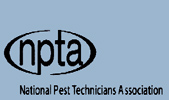



Why Proof? | Our Services | Urban Pest Birds | In The News | Our Clients
Urban Pest Birds
Pest birds are increasingly becoming a problem in urban areas, where large populations of certain species can cause serious problems such as the spread of disease, structural damage to buildings, the contamination of stored products and noise pollution.
Although there are 13 species identified as pest birds in the United Kingdom, only the following five are a serious problem in urban areas.
| The Feral Pigeon (columba livia) | ||
|
The most common urban pest bird in the world, the feral pigeon is originally descended from the domesticated rock dove but have reverted to their wild form. They live in close proximity to man, building their nests on both modern and old buildings and inside the lofts of houses and commercial premises. Feral Pigeons are scavengers, finding an easy source of food in town centers, where they are fed by the general public or by the scraps of food which are often found outside food premises. Numbers of feral pigeons are increasing due to a lack of natural predators, the constant supply of food and the fact that they can breed all year round. |
 columba livia |
|
|
Herring Gulls (larus argentatus) and Lesser Black-backed Gulls (larus fuscus) |
||
|
Gulls are probably the fastest growing population of pest birds in the UK. Their behaviour has altered over the past 20 years and they now prefer to build their nests on rooftops rather than cliff faces. Gulls are scavengers and feed from scraps of food in town centers as well as sewerage outlets and domestic refuse tips. Gulls are large and aggressive and have been known to attack people as well as domestic pets and other animals. The noise, mess and smell associated with with Gulls can often become intolerable for people working in buildings where a gull colony has been established. Once a colony has been established, gulls will return year after year. The number of gull breeding colonies on rooftops in the UK is increasing by nearly 30% a year. |
 larus argentatus |
|
|
Starlings (sturnus vulgaris) and House Sparrows (passer domesticus) |
|
|
Starlings and Sparrows, although smaller in size than the previous birds, are no less a problem due to their vast numbers. Up to 1 million Starlings can be found roosting in one place and whole populations of both Sparrows and Starlings can live in stored food premises. Produce stored in buildings infested with these birds can become heavily fouled - even bagged goods in these areas can become damaged. The noise associated with large numbers of these birds can also pose a serious problem. Starling droppings can lead to the growth of several types of fungi including histoplasma and capsulatum which can lead to lethal diseases in humans. |
passer domesticus |


